Arctium lappa
[ARK-tee-um LAP-uh]
Family: Asteraceae
Names: Beggar’s Buttons, Clotburr, Bardana, Happy Major, Hardock, Burrseed,Personata,Great Burdock, Hurrburr, Hare-burr,Cocklebur, Sticktight, Personata, Love Leaves,Cockle Buttons, Fox’s Clote, lappa, lappa minor, thorny burr, clothburr, gobo (Japanese),Bardane (French), Klette (German), Lappola or
Bardana (Italian), Bardana (Spanish); Lopan (Polish); Niu bang zi (Chinese)
Description: A large herb, with tall stalk and huge leaves. Height to 10 feet and width to 3 feet. Flowers are round heads of purple on 3 to 4 foot stalks. Leaves are wavy, dull green on top, with fine, gray, downy undersides, to 20 inches long. Supported on stout stems that rise from a central location. Fruit is a sphere of brown-gray burrs. The taproot is up to 3 feet long. Blooms from mid-July to September.
Cultivation: Biennial. Zone 3. Germination in 6-10 days. Space 2-3 feet apart. Ideal soil temperature 70F. Soil, dry, medium rich, well drained, with pH of 5-8. Full sun. Sow seeds directly into the garden. Many herbalists mix wood chips and sawdust into burdock beds to keep the soil loose so roots are easier to
harvest. Harvest the roots during the fall of the first year or the spring of the second.
History: Scientific name is from the Greek words for arktos, meaning “bear”, and lappa, meaning “to seize”. The English “bur” came from the French word for “woolly” - “bourre”, and the word “dock” is from Old English, referring to large leaves. The leaves of Burdock closely resemble those of broadleaved dock and it was originally called “burdock”, a kind of “dock with burs”. Broadleafed dock and burdock were used by farm women who wrapped their butter in the large cool leaves to keep it from melting on the way to market, so Burdock may be a corruption of “Beurre [butter] dock”.
Velcro was developed by George de Mestral of Switzerland after observing the burdock seed’s hundreds of tiny hooks through his magnifying glass. It is mentioned in three of Shakespeare’s plays: Troilus and Cressida, King Lear, and As You Like It. The large heart-shaped leaves were once used as masks in ancient Greek drama to cover the faces of actors when they performed, which is where the name Personata may have come from.
Burdock is an herb of Venus and useful in love matters. An old charm directed a girl to pick a bur and name it for her lover. She then threw it against her skirt or had a friend do so. If it stuck, he was true; if it did not, he was faithless. The stems when peeled and eaten “increased seed and provoked bodily lust.” Yet another claim stated that the root, eaten with fat meat, cured lust.
Meridians/Organs affected: lungs, stomach, liver, kidneys
APPLICATIONS: Root decoction is used for skin disorders, especially persistent boils, sores, and dry, scaling eczema; tincture is used in combination with arthritic, digestive herbs, such as yellow dock, to detoxify the system and stimulate the digestion; also for urinary stones and gravel; poultice is applied to skin sores and leg ulcers; a wash of the decoction is used for acne and fungal skin infections, such as athlete’s foot and ringworm; leaf infusion is used for indigestion and as a
mild digestive stimulant; poultice is applied to bruises and skin inflammations, including acne; infused oil is used for varicose ulcers; seed decoction is taken for feverish colds with sore throat and cough. Used with heartsease for skin eruptions.
Constituents: Inulin, essential oil, resin, antibiotic substance, polyacetylenes, organic acids, seeds contain fixed oils, glycoside, chorogenic acid. Leaves contain arctiol, fukinone, taraxasterol.
Medicinal Uses: Western herbalists have long used burdock for its demulcent action, both externally and internally, and for its alterative effects on the blood and urinary system. During the Middle Ages, remedies for kidney stones contained burdock in the belief that a stony character in a medicine would cure the stony ailment. The Chinese find it more valuable as a healer of hot (yang) conditions. It enters the liver meridian and benefits spleen deficiency. Its diaphoretic and diuretic properties make it valuable for eliminating excess nervous energy, sweating out toxins, and cooling the heat of infections. They also use it for colds, flus, measles, and constipation. The Chinese also consider burdock to be a strengthening aphrodisiac.
The most popular western use of burdock root is as a primary herb in blood purifier formulas. It is also used to cleanse the body of uric acid and other residues that accumulate from rheumatism, arthritis, and gout. Seeds are sometimes used for skin problems. The shredded leaves have also been folded into egg whites and applied as a skin dressing to accelerate healing. Tests confirm that it kills both bacterial and fungal infections. French herbalists have used the fresh root to lower blood sugar levels in diabetics because it contains the easily digestible starch “inulin”. It is also believed, but not proven, that the root regenerates liver cells and stimulates the gallbladder. Burdock is used in many parts of the world in herbal cancer treatments, was an ingredient in the Hoxsey formula, and is one of the four ingredients in the Essiac formula.
Properties: mucilaginous, alterative, diuretic, diaphoretic (fresh), urinary tonic, demulcent, bitter, laxative, vulnerary
Energetics: Root/leaves are cool, drying, bitter; root is slightly sweet; seeds are cold, pungent, bitter.
Ritual Uses: Gender: Cold. Planet: Venus. Element: Water. Basic Powers: Purification, Protection. Specifics: Cast in house or magic room to ward off negativity. Add to protection sachets of all kinds. Wear a necklace of dried, carved burdock roots as protection against magic.
Recipes:
Skin Cleanser: ¼ cup burdock root, ¼ cup dried nettle leaves, ¼ cup dried horsetail. Boil for 15 minutes in 3 cups water. Strain. Add to bath water.
Hair Rinse for oily hair: ½ cup burdock root, ¾ Tbsp horsetail leaf; ¾ Tbsp chamomile, ½ cup soapwort, 1 Tbsp nettle. Make a dry mixture of the above ingredients. Throw 1 Tbsp of the herb mixture onto a cup of boiling water and boil for a few minutes. Allow to cool. Strain and use to rinse hair.
If your looking for a great book that will give great ideas to create a magic space in your garden, then this is the book to get.
I loved how she includes the flower folklore. A handy dandy guide to anyone that wants to know the "what's" and "whys" of flowers. What it's purpose is and why. I for one love folklore, it adds mystery, and a whimsical feel. When a person walks into my garden and asks "what's that flower?" I like to tell them, "oh that's calendula, hey, did you know......" LOL I definitely learned a few things I didn't know about my flowering beauties and their sometimes dark past, from this book.
There are sections for moon gardening and astrological timing, as far as planting goes. Floral and herbal spells, and a great section on container gardening and what flowers to plant to protect the home and garden.
Granted I am just touching the surface here, and I wouldn't want to spoil a good read!
Homemade Cream Of Mushroom Soup w/Cheesy Garlic Croutons
This recipe is to die for. Every time I serve this I am asked again and again for the recipe, so I thought I'd share.
6 Tbsp unsalted butter
1 C. chopped yellow onions
1/2 C. chopped celery
1/4 tsp. cayenne
1 1/2 tsp. minced garlic
6 ounces shitake mushrooms (clean, trimmed, sliced)
6 ounces oyster mushrooms (clean, trimmed, sliced)
8 ounces button mushrooms (clean, trimmed, sliced)
2 tsp. fresh thyme
1 tsp. salt
1/2 tsp. fresh ground pepper
1/3 C. brandy
6 C. chicken stock
1 1/2 C. heavy cream
1 (8-inch long) thin baguette french bread, cut into 1/2 inch thick slices
3 cloves garlic, peeled, crushed
2 Tbsp. extra virgin olive oil
3 Tbsp. finely grated Parmesan cheese
In a large pot, melt butter over medium heat. Add onions,celery, and cayenne, and cook, until soft, @ 4 minutes or so. Add garlic and cook for @ 30 seconds. Add mushrooms, thyme, salt, and pepper and cook,stirring until liquid is gone & browned. (mushrooms will give off lots of liquid, be patient). Next ad the brandy and bring to a boil and cook until glazed. Add the stock and return to a boil. Reduce the heat to medium low and simmer uncovered, stirring occasionally, so as not to burn for @ 15 minutes or so.
Remove from heat. Puree with a hand held mixer. You can puree until smooth, or do like I do and leave the bigger mushroom chunks behind. Add the cream and return to a simmer, and cook for another 5 minutes. Remove from heat and adjust salt to taste.
On to the cheesy croutons!
Preheat your oven to 400 degrees F.
Rub both sides of your french bread slices with the crushed garlic and place on a baking sheet With a pastry brush, brush 1 side with the olive oil. Top with your fine grated Parmesan cheese and bake until the cheese is bubbly, usually @ 5 minutes. Remove from the oven, and serve over the top of your yummy delish mushroom soup!
As hard as we try, in one form or another there is always something to clean in that kitchen! Back when I knew very little about the harsh reality of commercial cleaners, I was using a slew of toxic concoctions bought from the store. Blissfully unaware of just how must nasty stuff was in my "cleaning" agents.
Oh yes, they got stuff clean alright, but the after effects.....(sigh) nasty. It all started one day when I was about 23 years old. I got a new rental house of my own, & new found freedom. My landlord was gracious enough to allow me to have my pets, which at that time consisted of 2 cats, and 2 dogs. Well as anyone knows, moving into a new house requires some spiffing up, so off I went to get some cleaning supplies to beautify my new home.
The kitties litter boxes needed to be disinfected, so bleach was in order. The floors needed to be scrubbed, so lemon scented ammonia was in order (grandma swore by it, since it left a clean smell after it was used) dishes needed to be washed, windows, etc, etc.
By the time I left I had spent over 50.00 dollars in cleaning supplies at that time, and that was many years ago already, (I'm sure the price went up). Anyways, I come home and start to clean, whirling around the house in my faded blues and do-rag covered head, swinging my then libmann wondermop around my linoleum covered kitchen floor.
Spraying the windows with Windex and washing them to a sparkling shine. The house smelled of what could be described as a chemical plant. Noxious and almost an insult to the nose. However if it smelt of bleach, and ammonia and Windex, you knew it was clean.......yea right.
Then came "the incident". I filled the tub up with warm soapy water, added a cup of bleach and added a dash of ammonia for good measure. then threw in the cat litter boxes and started to scrub away. Leaned over the tub, with scrubby sponge in hand, then suddenly, I began to feel just awful, sick, and nauseated. Next thing know, I was touching the floor with my nose. Yea, what the hell was I thinking? Apparently when you mix bleach and ammonia, it makes Chlorine Gas. OOOOHHHHHH how lovely.
Even worse....if I would of added one more than the other, it would have made either Nitrogen Trichloride (very toxic) or Hydrazine (explosive rocket fuel). Yipes!!!!!!!
Now tell me, what woman, who cleans, is aware of these things...well common sense would tell you that yea, your not really suppose to mix stuff, but at that age, who thinks of this stuff in such great depth. Well anyways...lessen learned, after practically gassing myself to death!
My mission since then, was to find out all I could, about the constituents of everything I used. Literally. Call me anal, but hey, can you blame me?
Cleaning naturally is the way to go in my book. Yes some things are just darn near impossible to get to work that way. What do you mean you say? Well let me give you an example. Say for instance. You have an automatic dishwasher. Not only is it not frugal to make your own dishwashing liquid/powder, but darn near impossible to get it to clean properly, if at all. Get my drift? So the next best thing is to search for an alternative. Something that is less toxic to you and your envirement. I use WAVE High performance dishwashing liquid, it's earth friendly, as is all there products, and its made with natural ingredients.
However, like with all natural products, sometimes it takes some getting used to. Let's face it, if your switching over from your regular grocery store brand, to an all natural cleaning product, yes you will see some differences, but for the most part the differences can be tolerated. At least for me they can, the way I See it, if I have to tweak it a lil bit to make it clean for me, it is still better than using the toxic stuff.
When I use my liquid in the dishwasher, it doesn't like to rinse well, it does leave white film on some of the dishes, but hey, problem solved, I just add some vinegar in the beginning of the wash, and problem solved. Sparkling clean!
Ok, so I'm getting long winded here, so onto a few recipes for some homemade cleaning products I use in my home on almost a daily basis. But first, the 3 most important cleaning supplies I ALWAYS have on hand.
1. 1 gallon of white vinegar
2. 1 HUGE box of baking soda
3. 1 gallon of liquid castile soap
I use alot of these ingredients, from cleaning my toilets, and using it in my laundry.
So here is a recipe for a disinfectant I use in my kitchen and in my bathrooms. I use it to clean my counter tops, toilets, sinks, anywhere I think is "germy".
Herbal disinfectant
you will need:
a spray bottle ( enough to hold @ a quart of water - more or less)
water
castile soap
essential oils of tea tree, peppermint & eucalyptus
add to the spray bottle @ a 1/4cup liquid castile soap
20 drops tea tree essential oil
10 drops peppermint e.o.
5 drops eucalyptus e.o
add the warm water to your spray bottleand other ingredients, put the cap on, shake, and spray wherever you think needs disinfecting. Let sit for a few seconds, then wipe off with a clean wet dishrag. Depending on what your countertops are made from, essential oils will strip wood. So be careful. I found this out while cleaning my toilet seat....LOL
It smells wonderful, and tea tree is a great disinfectant, and among other things, antiviral, fungal, you name it. So is peppermint and eucalyptus great for killing the germies.
Plopp Plopp Fizz Fizz Toilet bowl cleaner
Ok, so not the most greatest name for a toilet bowl cleaner...LOL But it cleans beautifully.
add to your bowl 1/4 cup vinegar
10 drops of Tea tree e.o
and 1/2 cup baking soda
then stand back and watch it foam! hehehehe, swipe with your brush, swish, swish, and flush. Done. Smelling like a daisy and clean.
Birthday of Dennis Carpenter, Circle Sanctuary. Circle Sanctuary is a non-profit Wiccan church and 200-acre nature preserve dedicated to networking, community celebrations, spiritual healing and education. Located in Southwestern Wisconsin. I have yet to attend their many classes and gatherings. BUT! I will be very soon, I just have to make my way down there. I am Soooooo looking forward to it!!!! They also have a quarterly journal of rituals, articles, news and more, of interest to anyone following a nature based path. A great site.
Aphrodite Love Charm Assemble materials and cast a circle on the appropriate hour and day. Light a red candle and burn Venus incense. Cut a circle out of red or rose-pink cloth (orange, green or white could also be appropriate). Fill it with a mixture of any of the following herbs and oils: rose petals or buds, jasmine flowers, lavender, cloves, Yarrow, and a few drops of patchouli oil. Add a red felt heart and a copper coin. Write in tiny letters on a small piece of paper: Aphrodite of the sea,Send my true love to mePlace it in the charm. Charge it with the four elements. Imbue it with your desires and visualizations. Ground the energy and relax. Bind the charm by tying it with a blue thread in seven knots. Open the circle. Easy Peezy Yarrow CharmIt is said to bring love into your life.... Gather a few sprigs of yarrow flowers with the stems attached, hang them upside down, with the flower heads pointed downwards over your bed. And last but not least a Link for "Spell A Day" from Llewellyn:Llewellyn "Spell a Day"
Yarrow in Magik & Superstition
Where the Yarrow grows, there's one who knows....
Yarrow is bound to Water and Venus. Any herb under the influence of Venus makes for a potent love herb for spells and rituals, and Yarrow is no exception.
When drunk as a tea, Yarrow is said to increase psychic powers and powers of perception. When flowers or leaves are burned, if the smoke goes up, it's a good omen, but if it goes down, it's a bad omen.
Use Yarrow flowers in love sachets and charms. Place Yarrow flowers under your pillow before sleep and your lover will appear in your dreams. Hang flowers over your bridal bed to insure love that lasts at least 7 years. Use Yarrow in spells and rituals to draw the attention of long lost friends or lovers.
Yarrow is a well-known protection and purification herb. Carried in the hand it is believed to ward off fear. Try carrying in a silk or velvet bag when going to a job interview or making a speech to reduce anxiety. Carried in a pocket or purse, Yarrow reverses negativity and protects from hexes. Add to the bath to protect from evil or harm. Throw Yarrow flowers across the threshold to protect the house from evil. Tie to an infant's cradle for protection from harmful forces.
Yarrow carries the name Achillea because the Greek God Achilles in mythology is storied to have given the plant to his troops to stop bleeding in battle. Unfortunately, it didn't stop the bleeding when he hurt his own heel, and he died from his wounds. The modern terms "Achilles tendon" and "Achilles heel" originate from this myth.
Yarrow sticks (dried Yarrow stems) were used by the ancients for I Ching divination for centuries. Yarrow was considered a spiritual plant that was highly suitable for for this purpose. Sadly in modern times, coins have largely replaced Yarrow Sticks for this type of divination..
Stay tuned for spells including Yarrow.....
Bright Blessings
Occasionally I will take a book from my library and review it. Each and every book I have purchased in the past is a useful tool in m everyday magical workings. I have flipped through many a page over the years. I have used most of them to further educate myself. Some for just plain good reading with a cup of chamomile tea, to pass the time. Here is a book from my library and link to purchase it at Amazon.com - Titled : Rosemary Gladstar's Family Herbal - A Guide to living life with energy, health, and vitality
A little about Rosemary Gladstar:
Since 1972, She has been sharing her knowledge, experience, and love of herbs as an educator, activist, and entrepreneur. She is the founder and president of the United Plant Savers, co- founder and director of Sage Mountain Herbal Retreat Center and Native Plant Preserve, director of the International Herb Symposium, co- director of the New England Women's Herbal Conference, founder and former director of the California School of Herbal Studies, and author f the best selling Herbal Healing for Women. Gladstar has also created her own line of herbal blends for Frontier Herbs.
When I first set out to find this book, I was on the search for a used one, that I purchased off of amazon.com. You can find gently used books on amazon, for half even 3/4 the price of new. They range (new) anywhere from 50.00 to 129.99. Since I bought mine used with slight wear I paid only 24.00 at that time. It had a few highlight marks from the previous owner but other than that, it was a great find.
I absolutely LOVE this book! It's very informative, educational, and thorough. I think it's safe to say that even for a beginner, it is well written and easy to follow. She outlines everything and gives detailed definitions.
For the beginner some herbal jive can be confusing, but not with this book, if you aren't sure what the word means, it is clearly defined, and why.
There is a section for just about every stage of life from young children to teen,adult, and elderly. Also it focuses on some common ailments. Such as colds, flu, headaches, etc. and what herbs to treat.
More than once I have flipped through this book in an emergency, in search of her many herbal remedies when the cold and flu season hit around here. She even gives preventative tips. How to prevent ailments from happening or to lessen the chances. All in all, a great must have book to have around the house. This book sits either on my bedside table or in my kitchen where I can always have it on hand.
Achillea millefolium (syn Achillea lanulosa)
[ah-KEY-lee-uh] Each Month I will pick an herb I have used, grows in my area, or that I find just plain interesting. If you wish to see a particular herb featured for a certain month, feel free to leave a comment. If I get enough comments for one particular herb or plant, (also can be a tree) I will then feature it for the month.
Family: Compositae
Names: milfoil, thousandleaf, sneezewort, sanguinary, nosebleed, soldier’s woundwort, stop bleeding herb, sanguinary, thousand leaf, thousand-leaved clover, bloodwort, wound herb; Seven year’s love, old man’s mustard, military herb, old man’s pepper, thousand seal, hundred-leaved grass, arrow root, eerie, ladies’ mantle, knyghten, stanch weed, field hops, gearwe, yarroway, devil’s plaything, snake’s grass, death flower, stanch griss; Carpenter’s Herb, carpenter’s grass, gordoloba, green arrow, dog daisy, Plumajillo; herbe des charpentiers, millefeuille (French); Schafgarbe (German); achillea, millefoglie (Italian); Krwawnik Pospolity (Polish); Chiliofila (Greek)
Description: low-growing leaves, with straight flower stalks. A height up to 3 feet and a width to 1 foot. The flowers are tight groups of tiny, ¼-inch white flowers, clustered in 3- to 3-inch umbels on stiff, upright stems. Leaves are very finely divided and feathery on stems to 8 inches long, becoming smaller toward the top of the plant. It blooms from June to August.
Cultivation: A perennial to Zone 2. It germinates in 10-14 days. Needs light to germinate. Prefers well drained, fairly dry soil. Will tolerate poor soil and is very drought resistant. In the west it only needs to be irrigated every 2-3 weeks; drip irrigation is best. If the soil is really poor then fertilize with manure first. The ideal germination temperature is 78-80F. pH is 4.2-7. Requires full sun and will become straggly in shade. Seeds germinate in 10-20 days are ready for transplanting in 8-12 weeks. Divisions are done in early spring or late fall. Divisions are easy to do but somewhat time consuming to plant. Seedlings are planted out in late spring or early summer. Divisions are planted when they are done in fall or early spring. Spacing is 12-18 inches in the row and the rows are 24-30 inches apart. Blooms start the second year. The flowers are harvested as they start to bloom in summer. The flowers will continue to bloom for several weeks. As flowering begins the top growth up to 8 inches long is cut off and dried in a thin layer. The center of the bed dies back after about 5 years and will need replanting with fresh root division. Yarrow flowers dry readily in 3-5 days. They are 65-70% water. History: Achilles reputedly used yarrow to heal wounds of the Greek troops during the Trojan War, hence its botanical name. It has been used for this purpose for centuries and in Scotland a traditional wound ointment was made from yarrow. The Anglo-Saxons named yarrow gaeruwe, from gearwian,meaning to Prepare” or “to treat”, referring most likely to its curative properties. Other names, which generally describe yarrow’s ability to stop bleeding, include soldier’s woundwort, knight’s milfoil and herba militaris. In Medieval times, yarrow leaves were tolled and put up the nose to stop bleeding. Its finely divided leaves were the reason for another name, milfoil meaning “many leaves.” Druids used yarrow stalks to divine seasonal weather, while the Chinese cast the I Ching oracle with them to determine the future.
In the Middle ages the name was Supercilium Veneris or the “eyebrow of Venus”. Historically plants named after goddesses have been healing remedies for women. Yarrow was among the sacred herbs accompanying the dead on their journey in the middle east. In the Orkney Islands yarrow is widely used for dispelling melancholy. It is an important herb when healing someone burdened by troubled emotions, helping cleanse them of an unhealthy sorrow or a depression which has lasted too long. Albertus Magnus uses yarrow in combination with nettles to treat fear and self-negation. Yarrow was reportedly the first herb placed in the baby Jesus’ hand, perhaps to signal both his healing powers and vulnerability. Yarrow is one of a handful of plants call allheal in the English herbal tradition. In America it is the “life medicine” and general panacea of the Navajos. People used yarrow as an astringent and made a salve of it to heal sores. Native Americans poured an infusion of the plant tops into the ears of those with earaches, and pioneers drank it for everything from urinary problems to head colds.
Constituents: volatile oil with variable content (azulene—up to 51%, borneol, cineole, terpineol, eugenol, trace of thujone, linalool, camphor, sabinene, chamzulene); sesquiterpene lactones, flavonoids, saponins, sterols, glycoalkaloid (achilleine), alkaloids (acilleine); polyacetylenes; triterpenes; salicylic acid; coumarins; tannins, sugars
Properties: anti-inflammatory, antipyretic, antirheumatic, antiseptic, antispasmodic, astringent, carminative, cicatrisant, diaphoretic, digestive, expectorant, hemostatic, hypotensive, stomachic, tonic.
Energetics: bitter, spicy, neutral
Meridians/Organs affected: lungs, liver
Medicinal Uses: Due to the flavonoids they contain, yarrow flowers encourage circulation, lower blood pressure and help stop bleeding anywhere in the body. A couple of cups of hot yarrow, peppermint and elder flower tea is an old remedy for reducing fevers and treating colds, measles, and eruptive diseases. It also helps relieve urinary tract infections and stones. The tea benefits the kidneys. Cramps and rheumatism are treated with the tea, as are intestinal gas, diarrhea, anorexia and hyperacidity. In China, yarrow is used in poultices and to ease stomach ulcers. It is said to stop excessive blood flower especially well in the pelvic region, so is used to decrease excessive menstruation, postpartum bleeding, and hemorrhoids. Chewing the fresh leaves relieves toothache. Yarrow contains a chemical also present in chamomile and chamazulene, that helps relax the smooth muscle tissue of the digestive tract, making it an antispasmodic.
Yarrow can be taken in the form of herbal tea, tincture, fresh juice or medicinal wine. It can be used in a bath or on compresses. Sensitive people should perform a patch test before using the fresh juice on their skin. The tea is most effective when ingested in small sips throughout the day. A course of treatment with Yarrow should not last over four weeks, during which time the patient should avoid wine and coffee if possible. The fresh juice has a stronger effect than the tea. Two animal studies show yarrow protects the liver from toxic chemical damage. And a scientifically conducted trial in India showed yarrow helps treat hepatitis.
Aromatherapy Uses:
EXTRACTION: essential oil by steam distillation from the dried herb
CHARACTERISTICS: a dark blue or greenish olive liquid with a fresh, green, sweetherbaceous, slightly camphoraceous odor. It blends well with cedarwood, pine, chamomile, valerian, vetiver and oakmoss.
USES: Skin Care: acne, burns, cuts, eczema, hair rinse (promotes hair growth), inflammations, rashes, scars, tones the skin, varicose veins, wounds Circulation, Muscles and Joints: arteriosclerosis, high blood pressure, rheumatoid arthritis, thrombosis Digestive System: constipation, cramp, flatulence, hemorrhoids, indigestion Genito-urinary system: amenorrhea, dysmenorrhea, cystitis and other infections Immune System: colds, fever, flu, etc. Nervous System: hypertension, insomnia, stress-related conditions.
Toxicity: Reports that large doses cause headaches, dizziness, and even light sensitivity in some people, although this is not well documented. Yarrow has a tendency to cause allergic skin reactions or sneezing in people sensitive to the aster family. High doses of yarrow may turn urine dark brown. Do not become alarmed.
Cosmetic Uses: Yarrow preparations, because of their germicidal and anti- inflammatory properties, make them a good dressing for inflamed, irritated, oily, and blemished complexions. It strengthens, firms, and cleanses the skin. Patch test for those with sensitive skin.
Ritual Uses: Herb of Venus; gender: cold; Element: water; Part Used: flowers; Basic powers: love, clairvoyance, exorcism. A common herb in love spells, yarrow is included in wedding decorations and hung over the bridal bed to keep a couple together happily for 7 years. Worn as an amulet, it wards off negativity. The tea drunk prior to divination will enhance one’s powers of perception. Held in the hand it stops all fear. It is sometimes added to exorcism incenses. The flowers are a welcome addition to any magical altar, as the yarrow is one of the Witch’s favorite herbs. Large patches of yarrow growing in a field indicate a very grounded energy spot. Sit there to center and relax. Modern lore recommends waiting for the first yarrow bloom and using it to make a wish which should manifest prior to the harvest. The flowers are often included in rituals of union and are considered sacred to the Horned God.
“Yarrow, sweet yarrow, the first I have found. In the name of the Lord, I pluck thee from the ground As the Lord loves the Lady, so warm and dear, So in my dream may my lover appear.” (Traditional love charm)
Recipes:
Face mask: mash some fresh leaves and place them on the face for 10-15 minutes.
Astringent: allow 1 tsp of the dried crushed herb to infuse for about 30 minutes in ¼ pt boiling water and apply it while still fresh. Add the remainder to the bath to help you relax.
|
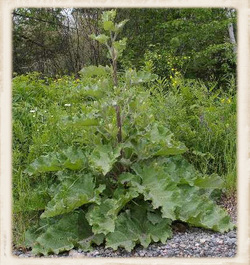
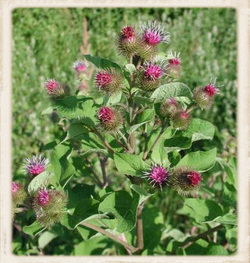
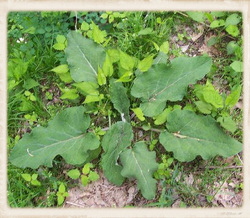


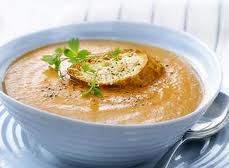





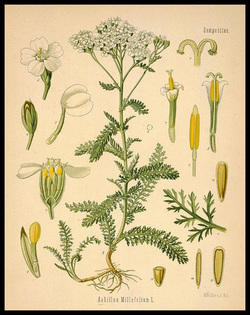

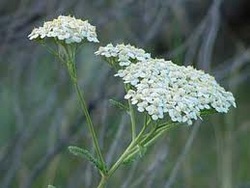
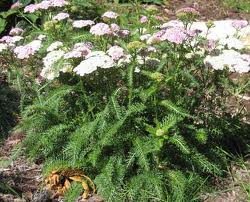
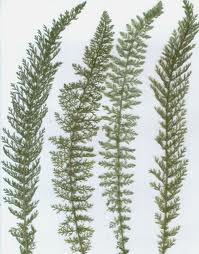
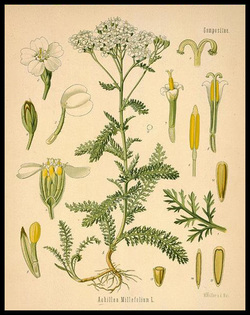

 RSS Feed
RSS Feed

